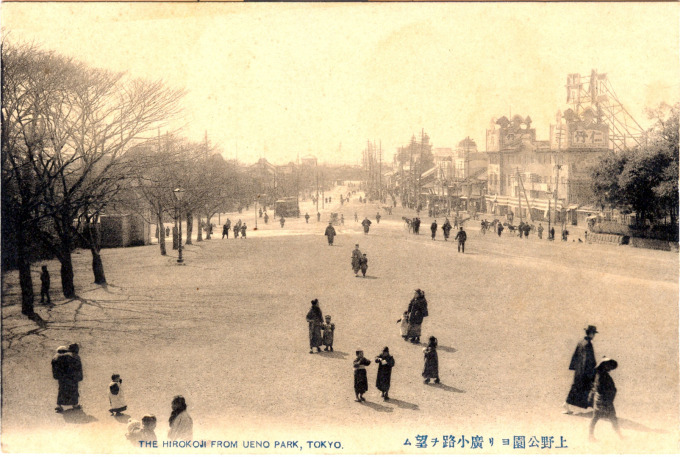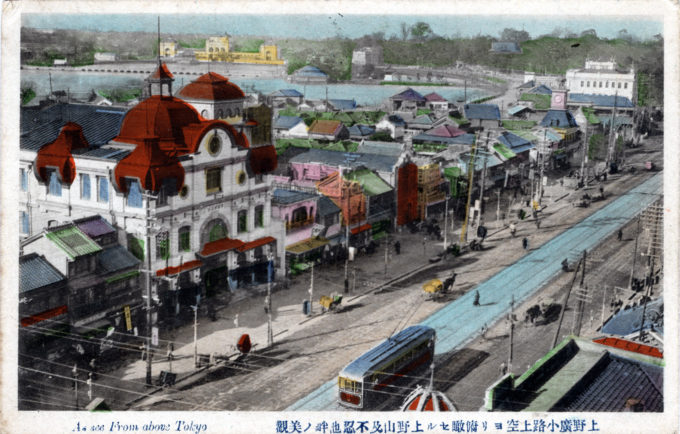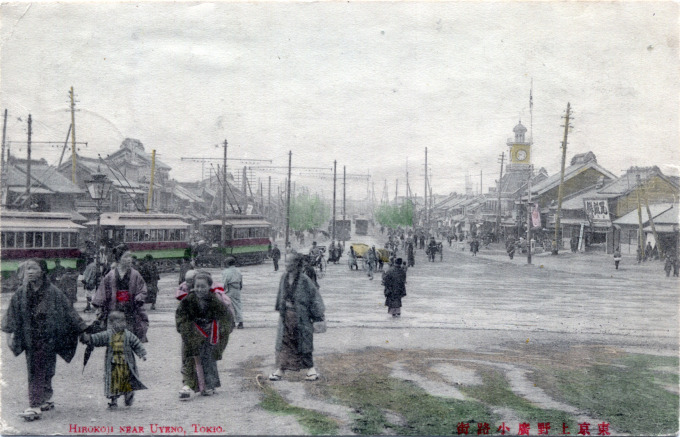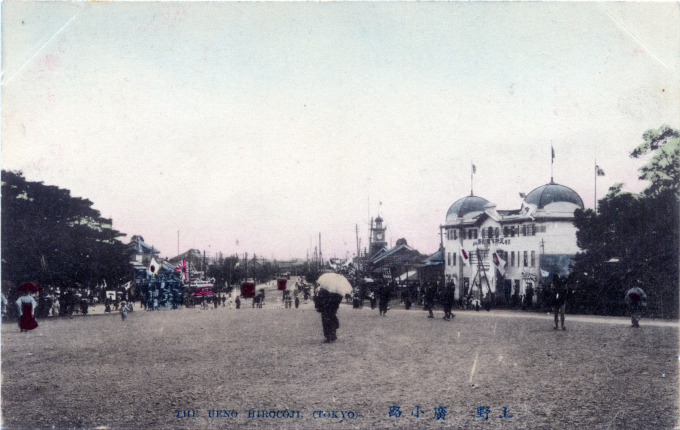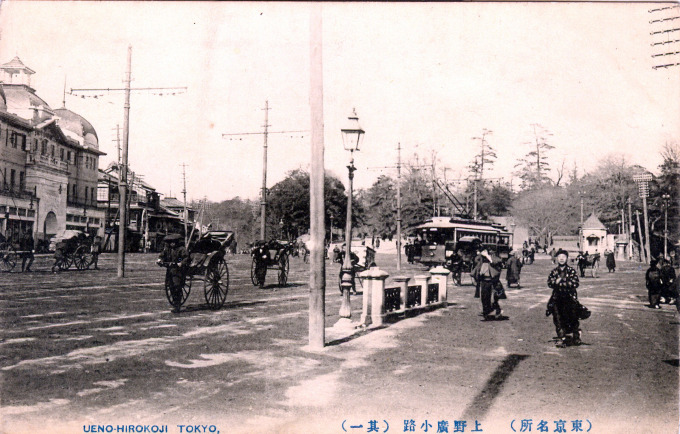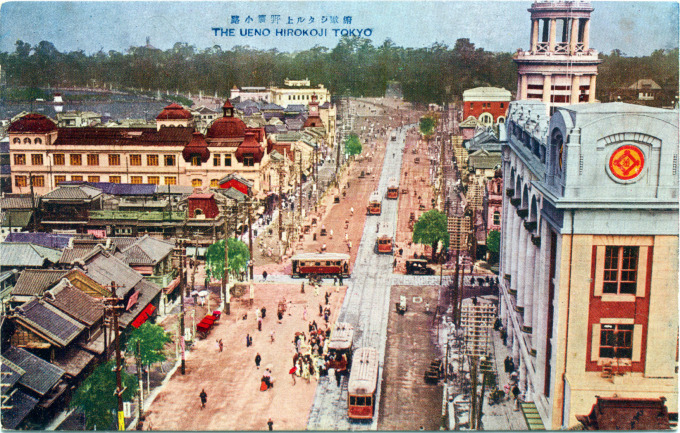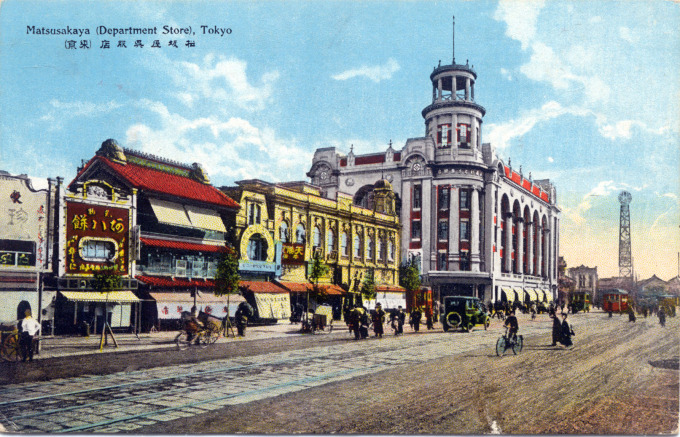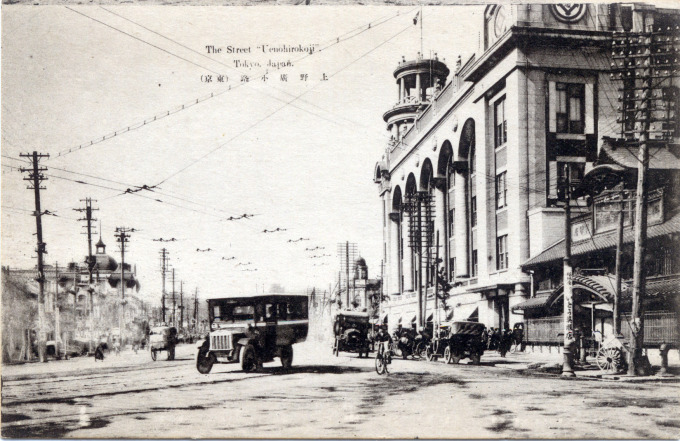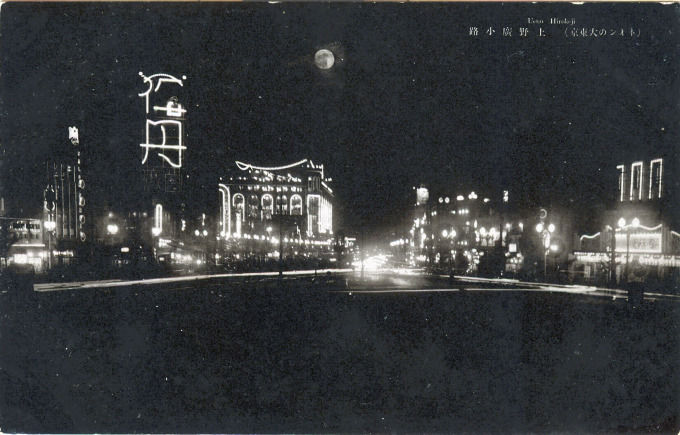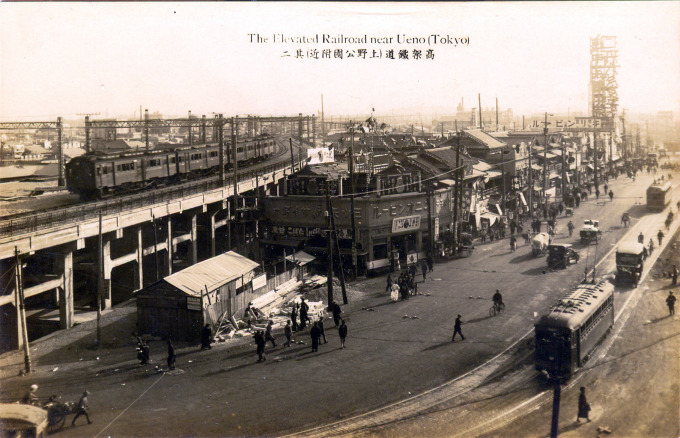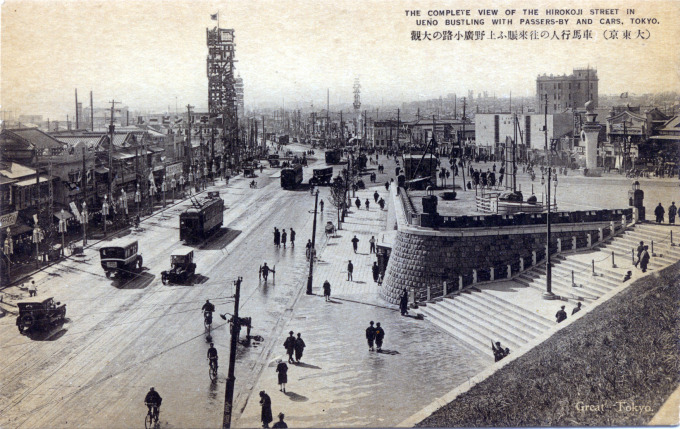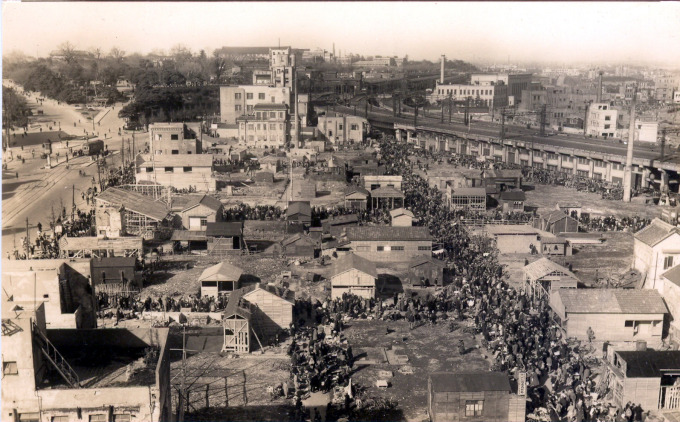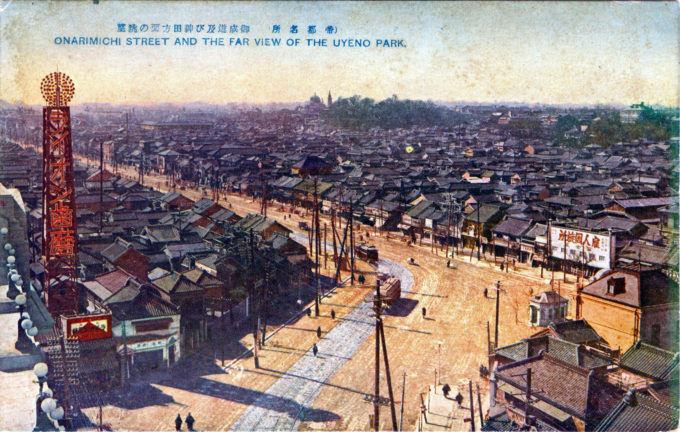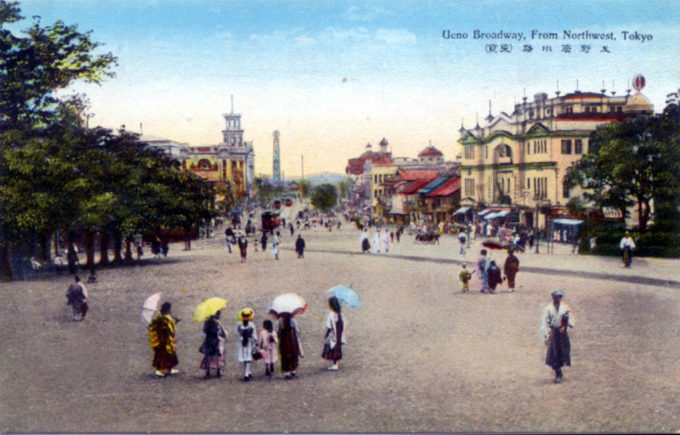
Ueno Hirokoji (Broadway), Tokyo, c. 1910. The tower of the Matsuzakaya department store can be seen left of center; to the right is the Ueno Suzumoto [traditional Japanese comedies] theater, Tokyo’s oldest entertainment hall. In the far distance is a tower advertising “Lion”-brand tooth powder (see postcard below).
See also:
Ueno Park, c. 1910
Tokyo “Black Markets”, 1945
Matsuzakaya, Ueno (1907-1940)
“We crossed over the Sumidagawa again and headed for the Ueno Hirokoji district. As we approached Hirokoji Street, we came upon a large burned-out area where a great number of people had gathered. They were assiduously sifting through the ruins, looking for something. My brother smiled bitterly as he said, ‘It’s the remains of the bullion treasury. Akira, shall we go look for a gold ring as a souvenir?’
“But at that particular moment my eyes were fixed on the greenery atop the Ueno hills, and I couldn’t budge. How many years had it been since I’d seen a green tree? That’s how I felt, as if I had after a long time at last come to a place where there was air. I took a deep breath. There had not been a single trace of green in all the ruins of the fire. Until that instant it had never occurred to me how precious vegetation is.”
– Something Like An Autobiography, Akira Kurosawa, 1982
The Meireki Conflagration of 1657, romanticized and immortalized as Furisode Kaji [the ‘Kimono Fire’ or ‘Fire of the Long Sleeves’], devastated the Shogun’s capital. The inferno escalated to epic proportions and raged through Edo for a week, wiping out almost half of the city and killing more than 100,000 people, similar to the count in 1923 (the Great Kanto earthquake, remembered by film director Kurosawa Akira in the quote above) when Tokyo’s population was five times as large. The fire resulted in many wide-ranging changes to Edo, among them firebreaks criss-crossing the city that would halt the spread of a future conflagration.
The firebreaks were created by the Shogunate by expanding several of Edo’s narrow streets into hirokoji [broad little street], wide boulevards to act as fire barriers. Among the best-known was Ueno Hirokoji, near the site of the Tokugawa family shrine at what is now Ueno Park.
- Hirokoji near Uyeno, Tokio, c. 1905.
- The Ueno Hirocoji [sic], Tokyo, c. 1905.
- Ueno-Hirokoji, Tokyo, street car station, c. 1910.
- Elevated view of Ueno Hirokoji, Tokyo, c. 1920.
- Matsuzakaya department store, on Ueno Hirokoji, c. 1920.
- Street view of Ueno Hirokoji, from the Matsuzakaya store, c. 1920.
- Night view of Ueno Hirokoji, c. 1920.
- Yamanote Line train service from Ueno to Tokyo, Shimbashi and Shinagawa, c. 1930.
- The Complete View of the Hirokoji Street in Ueno Bustling with Passers-by and Cars, Tokyo, c. 1930.
- Ueno Hirokoji, black market, 1945.
After the Restoration in 1868 and the beginning of Japan’s modernization in the late 19th century, Western-style shops and department stores, including Matsuzakaya’s flagship store, opened on the boulevard, created a bustling commercial atmosphere in the Ueno Hirokoji district. Entertainment venues included the Suzumoto Theater, the oldest and most historic entertainment hall in Tokyo. The entertainment there was vaudevillian: rakugo storytelling, comedy, acrobatics, paper cutting, magic, impersonations, spinning tricks, ballads and folk songs.
Horse-drawn trolley service began in the mid-1870s, running down Hirokoji from Ueno south to the Shimbashi railway terminal and east from Ueno to the temple district at Asakusa. The first electrified streetcars were routed along the same courses through Hirokoji in 1903.


